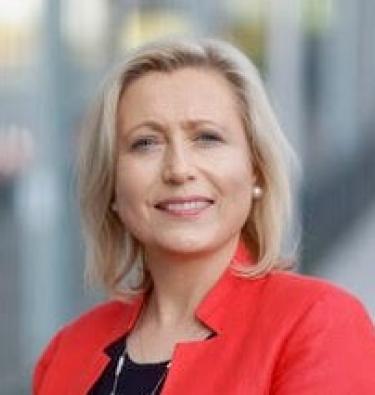
Focusing on the Information and Communications (ICT) sector specifically, the aforementioned figure is even more stark, moving to 1 in 5 employees. This figure has reduced drastically by 10 points since 2004, far short of the country’s goal of a critical mass of 30%. Diversity interventions have not affected significant positive results. The problem of how to attract and retain women in this sector seems surprisingly intractable. Dublin City University is as the forefront of research tackling this issue.
Ireland is one of the world’s leading technology hubs and as the pace of technology advances, the demand for engineering and ICT experts is only going to increase. However, over 94% of employers in Ireland have reported difficulties in attracting and retaining staff with engineering and ICT skills, despite offering higher than average remuneration.
The icon on this article reflects contribution to UN Sustainable Development Goal 5: Gender Equality. The Sustainable Development Goals are 17 objectives designed by the United Nations to serve as a shared blueprint for peace and prosperity for people and the planet.
Shortage of talent
This shortage indicates a major barrier to economic growth, and because these are typically well paid jobs, it further reinforces the gender pay gap. There is currently a difference of nearly 14% between women and men’s average hourly earnings.
The reasons for the lack of women in ICT careers are varied. The issues include gender stereotypes, lack of role models and a weak pipeline for talented individuals. There is a notable, large STEM gender gap at the university level, reflecting the difficulty in attracting girls to STEM courses. This gap then accentuates women’s under-representation in STEM industry roles. These issues along with the associated high rate of attrition among STEM career women, all combine to impede gender equity.
Focus on women’s experience
Working with Eileen Trauth from Pennsylvania State University, I decided to focus on identifying effective interventions, specifically examining the nature of change in terms of its influence on women’s participation in the IT sector. As change is multifaceted, we asked the question: how and why do societal, organisational and individual factors affecting gender equity in the IT field change over time?
We wanted to know about the lived experience of women who have become successful in the IT sector in Ireland, in most cases overcoming significant and evolving obstacles.
With this in mind, we undertook a 42-year investigation of the nature of change in factors affecting the position of women in the IT profession. Our study was longitudinal, based on interviews with 63 women at four periods in time, spanning four decades from the 1970s to the 2010s. It was also conducted against the backdrop of fluctuations in Ireland’s socio-economic status.
We analysed these interviews using three theoretical constructs. The effect on women of economic changes in Ireland is shown to occur through changes in other factors including policy, infrastructural and cultural influence, motherhood, and family life. These factors were examined in detail under three constructs: environment, identity and individual. The paper created a dynamic extension of this theory through the addition of seven themes that characterise the nature of change in factors affecting women IT professionals.
School level intervention
One unexpected and enduring finding, present in every era of the study, relates to the role of men in encouraging women’s participation and retention in the IT sector. The data tells us that the STEM gender gap in Ireland starts to accelerate after the Junior Cert. Up to that point, fairly equal numbers of girls and boys study Science. When it comes to Leaving Certificate, girls are predominantly overrepresented in biological sciences but are underrepresented in physics, a trend that continues at third level.
This finding raises the question as to how girls can be encouraged to continue studying physics and maths at a higher level in School. Our research showed that male family figures (fathers, brothers, uncles) in particular, exert an outsize and enduring influence in encouraging girls to choose to study higher level mathematics and physics in School, as well as subsequently persisting in STEM careers and helping them overcome gender-related and other obstacles.
The insights obtained from this study provide an important evidence base for policy makers, organisations, women’s networks and those interested in developing and deploying impactful interventions to remove the gender barriers which impede women’s participation in the IT workforce.
The paper was recently selected by the Responsible Research in Business and Management network for inclusion in their ‘Honor Roll’ of research most likely to have a positive social impact. RRBM is an organisation comprising Deans of International Business Schools and leading academics and this Honor Roll is supported by AACSB, EFMD and PRME accreditation bodies as well as the Globally Responsible Business Initiative.
Read full paper and citation here - Investigating the nature of change in factors affecting gender equity in the IT sector: a longitudinal study of women in Ireland




